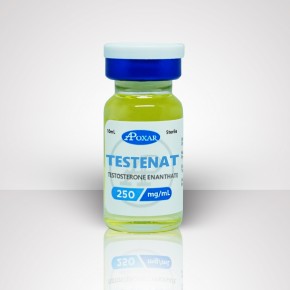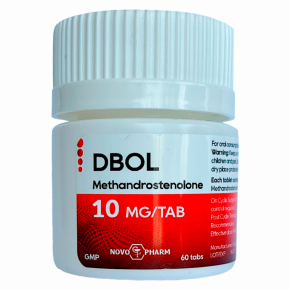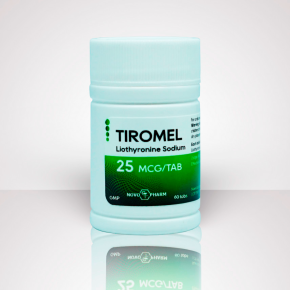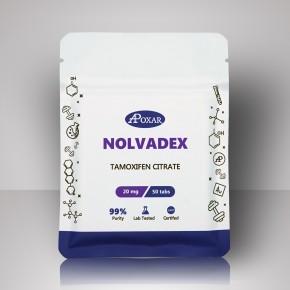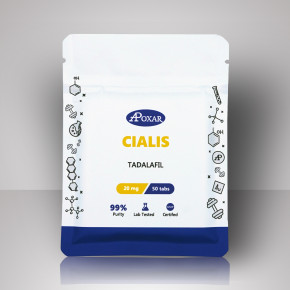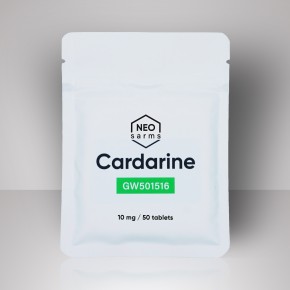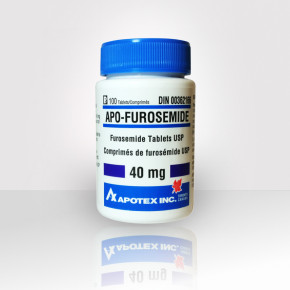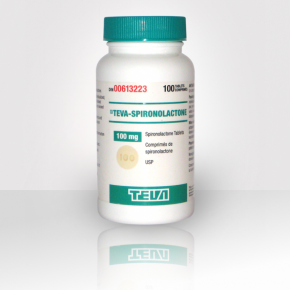Ever heard the saying “Ignorance is bliss”? Well, it’s not true in the slightest when it comes to anabolic steroids. If you want massive muscle and strength gains, you need to understand the basics of steroid cycling.
Let us make one thing clear: nobody wants to screw up their health, especially from the go-to ― but they can make costly mistakes and mess with their hepatic, hormonal or cardiovascular health. To avoid all these issues, you have to start… Well, from the start.
What you need to know about AAS
All anabolic steroids have some degree of androgenic activity. That’s why they are called AAS, or anabolic-androgenic steroids. Now, to what it means:
- Anabolic steroids interact with androgen receptors: the main mechanism of action stays unaltered, that’s how steroids promote muscle growth, enhanced protein synthesis, nitrogen, and glycogen retention ― these effects are called anabolic;
- Every anabolic-androgenic steroid is a Testosterone or DHT derivative in some form or modification: for example, Turinabol and Boldenone are Testosterone derivatives, whereas Winstrol is a DHT derivative. Some AAS are synthesized from Nandrolone, but Nandrolone itself is a testosterone-based compound;
- The potency of the androgen-related side effects will vary depending on the anabolic-androgenic ratio, but they will be present: common side effects may include oily skin, HPTA suppression (that’s why PCT is essential after EVERY cycle), mood swings, acne, and virilization.
What you want are anabolic effects ― something that will aid you in boosting muscle growth and recovery.
How to choose a steroid cycle
While all anabolic steroids can help you to increase muscle mass (or preserve it during a cutting cycle), some of them can be more potent than others. For example, there’s not much point in using Winstrol or Anavar on a bulking cycle ― your muscle definition will stay the same since you aren’t in a calorie deficit, but the muscle mass won’t shoot up either.
Here’s a short guide on compounds and their purposes:
|
Bulking |
If you’re on a bulking cycle, you should choose “wet” bulking agents, such as Testosterone, Deca Durabolin, Dianabol, NPP, or Anadrol |
|
Cutting |
Best options for a cutting cycle are Winstrol, Anavar, Trenbolone, Boldenone, or Masteron |
|
Beginners |
For beginners, it’s advised to start with a Testosterone-solo cycle |
Whatever you choose, you’ve got to follow time-tested rules:
- Do not mix two compounds that you haven’t run previously for a new cycle. You’ll probably end up cutting the cycle short because you won’t know which compound is causing side effects and what to do in this situation. Keep it as simple as possible;
- Forget about complex cycles with two or three potent compounds ― start with the base, Test, Deca, and Dianabol;
- Remember, more potent compounds can cause severe side effects, so they’re not suitable for beginners (especially in moderate or high dosages) and should be approached with caution;
Also, keep in mind: higher doses can significantly boost your muscle growth, but they can induce more serious side effects and greater testosterone suppression.
What is the safest steroid cycle?
NO steroid cycle is safe if you approach it like a moron, and ALL of them are safe if you do it smart. That's just how it works.
In case you’ve just heard of the safest, just-out-of-the-lab compound, it’s BS, guaranteed. You won’t find any new and safe steroids in Canada ― it’s just an advertisement trick.
Everything that you’ll need for your cycle has been synthesized 40-50, even 70 years ago, when steroid studies were supported financially. Nowadays, the majority of funding goes to making performance-enhancing drugs that won’t be detectable. There’s no concern for their safety or efficiency.
The basics of safety with oral anabolic steroids
Injectables are generally safer than oral steroids, as they do not put a strain on liver health.
When it comes to oral compounds, it’s better to stack them with a testosterone base. Of course, you can go for an oral-only cycle (as long as you’re not a complete beginner), but it can result in deteriorated testosterone production.
You should also stay clear of stacking two orals: pretty much all of them are 17-alpha-alkylated. It's bad enough for your liver if it's just one compound, and a combination of two orals can be EXTREMELY hepatotoxic.
Why you shouldn’t exceed the recommended dosage
Steroids do not work in a “the more — the better” way. If you think increasing the dosage and prolonging the cycle is the answer to quality muscle gains, you might wanna think again.
It’s always better to start slow and steady, up the dosage gradually (if needed), without exceeding optimal cycle length.
This approach leads to stable muscle growth ― you won’t lose most of your gains after the cycle or experience any “crazy” side effects, and your testosterone production won’t shut down. Then you can cruise (cycle much lower doses) or take a break from steroids (after PCT) and go for another blast (short run, higher doses) without any damage to your health.
Personal experience of steroid cycle length
So, how does it work? Let’s compare the results of two different approaches ― going all-in or following “boring” guidelines (and common sense):
- Dean just finished his first steroid cycle. He’s quite proud of how he pulled it off: instead of starting with a Test-only cycle, he chose a multi-compound one. When his blood pressure made his nose bleed during a low-weight bench press warmup, he didn’t know what was causing it, so he just went along with it, putting an additional strain on his cardiovascular system.
All in all, he has gained 22 lbs throughout the cycle, but he lost half of it a month after, leaving him with a solid 11 lbs and a real need for an ECG.
- Sam decided to go for a Testosterone-only cycle so he could understand how his body would react to steroids. He has started with 300 mg/week, upping his dose to 500-600 mg/week by the 4th week of the cycle. It’s a natural hormone and an anabolic base, so there weren’t any real side effects, aside from maybe a higher libido which his wife didn't quite consider a bad side effect. Overall, he has gained 20 lbs in 12 weeks. After he lost water weight, he realized that he had put on a total of 15 lbs of dry, quality gains.
Also, if you're new to it, your lack of experience plays by your side. Beginners will gain muscle mass at an increased rate, compared to bodybuilders who have years of cycling under the belt. There’s no need for complexity or incredibly potent compounds: your body will be stimulated even with 400 mg/week of Testosterone Enanthate.
PCT after steroid cycles
After the end of the cycle, you’ll need to start Nolvadex or Clomid for post-cycle therapy. These SERMs (Selective Estrogen Receptor Modulators) can help your body feels Ok while you restore your natural testosterone levels and mitigate estrogen-related side effects (specifically, gyno). Without PCT, your testosterone-estrogen balance will still get back to normal, but it may take months, in some cases even years.
Here’s how it works::
Your body will recognize low testosterone levels and will try to counter this, increasing LH levels. However, your testicles can be desensitized to LH stimulation, resulting in low testosterone levels and causing the following symptoms:
- Fatigue and lethargy;
- Low libido and ED;
- Headaches and brain fog;
- Depression and insomnia;
- Hot flashes;
- Increased body fat content;
- Loss of muscle mass.
It’s safe to say that without PCT, you can lose every pound you’ve gained throughout the cycle. Post-cycle therapy is essential; you can’t just skip it.
However, if you’re on TRT or prefer to cruise and blast, there’s no need for post-cycle therapy. Your testosterone levels will be in a normal range anyway. Women are another exception, of course: they don’t need PCT as well, but that’s a whole other story.
Aromatase inhibitors and anti-estrogen drugs
If you run the cycle with aromatizable compounds (ones that are prone to testosterone conversion into estrogen, like Testosterone, Dbol), you can add Arimidex (or Letrozole) as a preventative measure. It will allow you to manage estrogen-related side effects, such as water retention or hypertension, and lower gynecomastia risks.
Some bodybuilders prefer to add aromatase inhibitors (or AIs) only when estrogenic side effects manifest. High estrogen levels may cause:
- Decreased libido;
- Fluid retention;
- Low energy levels;
- BP spikes;
- Sleep disturbances;
- Gynecomastia;
- Enlarged prostate.
However, it’s better to add AIs early on (on the 3rd week of the cycle) to mitigate the risks, especially if you’re prone to gynecomastia. If you don’t want to do this, you should monitor your estradiol levels closely (E2).
Gynecomastia can become irreversible without surgery if the first signs if you don't catch it early on (lumps, swelling, itchy nipples). In this case, it’s recommended to cut the cycle short and add Nolvadex (first-line therapy) or Femara (second-line therapy).
Blood work on a steroid cycle
Blood work is an essential part of steroid cycling. In fact, you should check your lipids and hormone profile, CBC, and liver enzyme levels before you run the first cycle. That's called a baseline.
If you don’t know where your baseline is, you can’t use anabolic steroids. You may have contraindications, for example:
- Increased risk of atherosclerosis: increased LDL and decreased HDL levels;
- Impaired liver or kidney function: you should check your AST, ALT, Bilirubin, and electrolyte levels;
- Diabetes: increased glucose and glycohemoglobin levels;
- Prostate cancer: elevated prostate-specific antigen (PSA) levels.
You’ll need to do bloodworks after the cycle as well to make sure that everything is in order: E2, testosterone, LH, and FSH levels.
How to inject anabolic steroids
Anabolic steroids can be injected intramuscularly or subcutaneously, with a preference towards intramuscular administration. Injection frequency revolves around the compound’s half-life (which primarily depends on its ester).
Steroid esters comparison
Here’s what you need to know about all the most common esters in the steroid world:
|
Ester |
Half-life |
Injection frequency |
Concentration (a suspension with no esters is considered a 100% pure compound) |
|
Suspension |
1-1.5 hours |
ED |
100% |
|
Acetate |
24 hours |
ED or EOD |
86-87% |
|
Propionate |
1-1.5 days |
EOD |
83-84% |
|
Cypionate |
5-6 days |
E3D |
70% |
|
Enanthate |
6-7 days |
E3D |
70-73% |
|
Phenylpropionate |
2-2.5 days |
EOD or E2D |
65-70% |
|
Decanoate |
10 days |
EW |
65-72% |
|
Isocaproate |
3 days |
E2D |
75% |
You won’t see many steroids with Phenylpropionate or Isocaproate esters on the market; they are mainly used in blends (for example, Sustanon). The most common esters are: Acetate, Propionate, Cypionate, and Enanthate.
It’s recommended to inject your gear as frequently as possible (E3D for Enanthate or Cypionate) to keep the serum levels stable and prevent spikes. This way, you’ll avoid potent side effects and get the most out of the cycle.
Guide to steroid injections
Steroid injections aren’t that different from regular ones. However, if you’re new to self-injections, the procedure can look complicated. Here’s what you have to do:
- Prepare a draw needle to extract the compound from the vial ― a simple 18-22 gauge needle will do. You shouldn’t reuse your drawing needle for injection, as it can become dull and cause PIP (post-injection pain);
- Sterilize the top of the vial with an alcohol swab ― neglecting basic aseptic rules can lead to infection;
- Draw the compound from the vial ― if you’re using insulin syringes for subcutaneous injections, remove the back end of the syringe and transfer liquid from the drawing syringe;
- Replace the draw needle with a needle for injections ― opt for 23-27 gauge needles with a needle length of 1-1.5 inches (1.5-inch for glutes; delts, quads, and other muscle groups require 1-inch needle length);
- Insert the needle into the injection site ― do not meddle, take a deep breath, and plunge it in;
- Inject the compound ― to avoid PIP, it’s recommended to inject one mL in half a minute;
- Remove the needle and cap it ― then dispose of the syringe.
It’s that simple. If you are worried about hitting a nerve or puncturing a vein, you can start with injections into the glutes. It is considered one of the safest injection sites.
Eventually, you’ll need to learn to perform intramuscular injections into the delts or quads to rotate injection sites and prevent scar tissue build-up.
How to prevent PIP with anabolic steroids
Post-injection pain, or PIP, can be caused by various reasons. Alcohol in the suspension or a blend, just a notably high-PIP compound, or just not enough practice with injections.
If you can't PREVENT PIP completely, you can always MINIMIZE IT. For example, you can warm up the vial before the procedure or perform more frequent injections with smaller dosages.
And in case you’re struggling with post-injection pain more than you really should (it's generally mild), you can administer non-steroidal anti-inflammatory drugs (NSAID) or take a warm bath afterwards. Do not RUB the injection site hard (massage it gently instead) or put ice packs on it; it may make things worse.
When should you start using anabolic steroids?
It’s recommended to start your first cycle after 3-4 years of training to make sure that you’ve reached your natural potential. This means that you should be going into the cycle with low body fat content (MAX 15-12%) and full awareness about what anabolic steroids are and what their impact on your health is.
If your nutrition and training regimen aren’t in order, anabolic steroids are out of the question.
Steroid usage isn’t a magic wand; you’ll need to be disciplined: watch your weight and macronutrients, eat in caloric surplus (for bulking cycles), or deficit (for cutting cycles), and train at least 4-5 days per week (but we recommend going for 6-7 days a week because it's ALL days of the week).
In other words, if you’re training for a year and heard about anabolic steroids from a newfound gym bro, forget about it. It’s too early. You can go on a cycle after a few years once you’ve plateaued.
FAQ on steroid cycling
Can anabolic steroids affect muscle memory?
Yes, anabolic steroids can increase myonuclei numbers (the quantity of nuclei in a muscle cell), which can result in enhanced muscle memory. It means that even if you’ve stopped working out for a long period, your muscles will develop more quickly once you return to resistance training.
To be more specific, people who have never trained won’t be able to increase their muscle mass as fast as those who haven’t trained in a while. The same goes for steroid users and natural athletes. Those who have used steroids will return to their form more quickly.
How does steroid cycling work?
You check your blood work results to make sure that you have no contraindications and are ready for a new cycle. Then you choose an appropriate cycle for your goals and run it while monitoring your health markers and overall well-being.
After the cycle, you wait for the esters to clear out and go through post-cycle therapy if you aren’t on TRT. You can cruise & blast and forget about PCT altogether, but it’s not the best option if you aren’t hypogonadal.
You’ll need to give your body time to restore before going for a steroid cycle again. It’s called an off-cycle period, and it should be at least 8-12 weeks (depending on the cycle length ― including PCT duration).
If you’ve waited long enough and your key blood markers look good, you can start another steroid cycle. And so on — until you reach the peak.
Can I use SERMs during a steroid cycle?
There’s no point in adding SERMs to your cycle if you do not experience early gyno signs. To mitigate estrogen-related side effects, you can add aromatase inhibitors. If you are worried about extended cycle length and testosterone suppression, you can add HCG mid-cycle (500-1000 IU/week).

 Trusted by 50,000 Customers
Trusted by 50,000 Customers